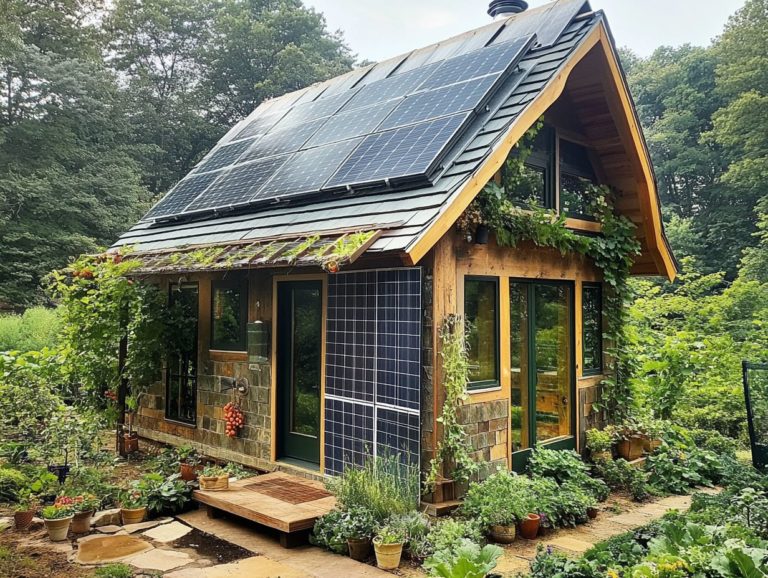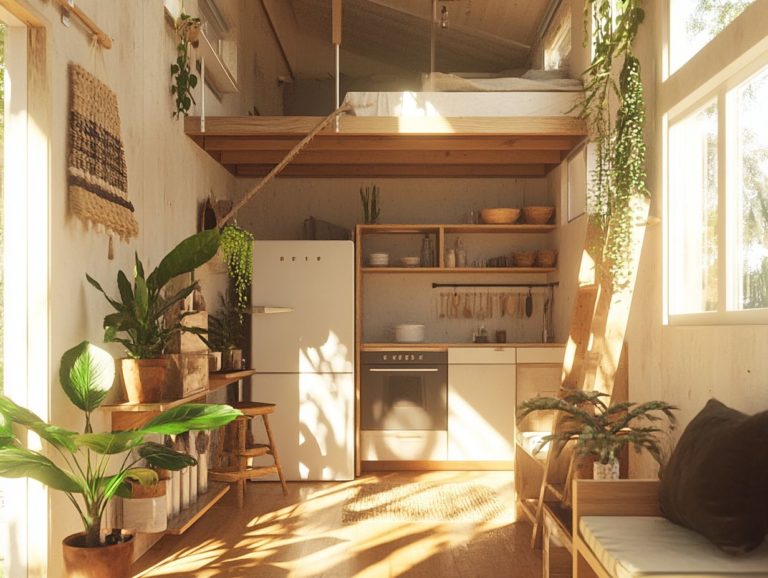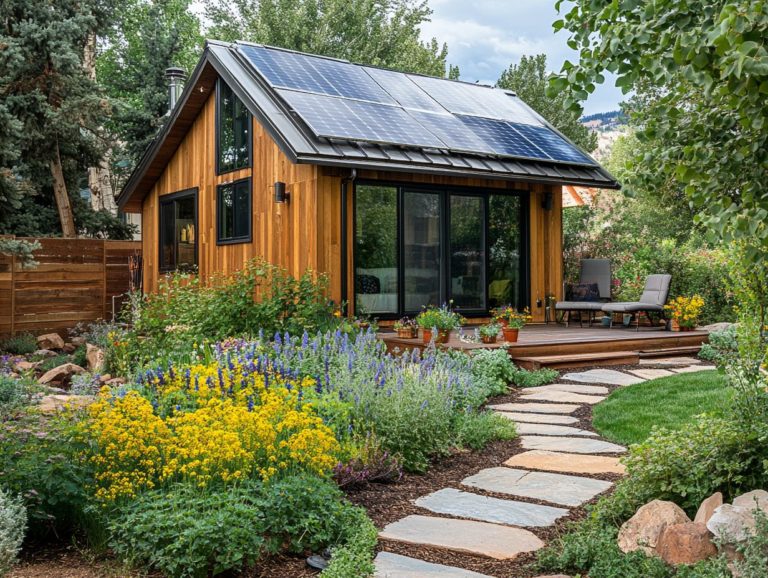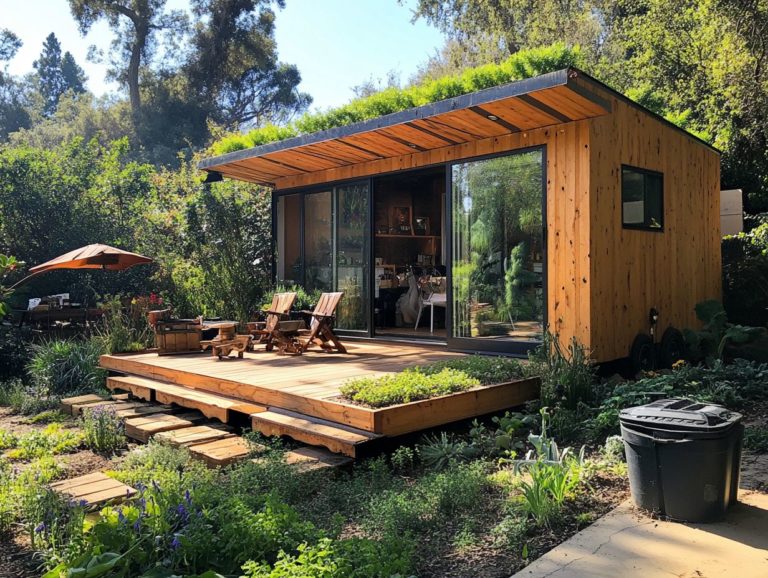Recycling in Tiny House Construction: What to Know
In an era where sustainability is paramount, tiny house construction presents a distinctive opportunity to weave recycling into your building practices.
This exploration delves into the pivotal role recycling plays in crafting environmentally friendly tiny homes, showcasing the materials you can reuse and the innovative techniques for repurposing them.
From enhancing design for easy disassembly to tackling the challenges of utilizing recycled materials, you’ll discover how embracing these practices not only benefits the planet but also contributes to cost savings.
Start exploring the benefits of tiny homes today as you navigate the intersection of sustainability and tiny living.
Contents [hide]
- Key Takeaways:
- The Importance of Recycling in Tiny House Construction
- Materials that Can Be Recycled in Tiny House Construction
- How to Incorporate Recycling into Tiny House Design
- Recycling Techniques for Tiny House Construction
- Benefits of Using Recycled Materials in Tiny House Construction
- Challenges and Limitations of Using Recycled Materials
- Frequently Asked Questions
- 1. What is recycling in tiny house construction and why is it important?
- 2. What types of materials can be recycled in tiny house construction?
- 3. How can I incorporate recycling into my tiny house construction project?
- 4. Are there any challenges to using recycled materials in tiny house construction?
- 5. Is recycling in tiny house construction cost-effective?
- 6. Are there any special considerations to keep in mind for sustainable recycling in tiny house construction?
Key Takeaways:
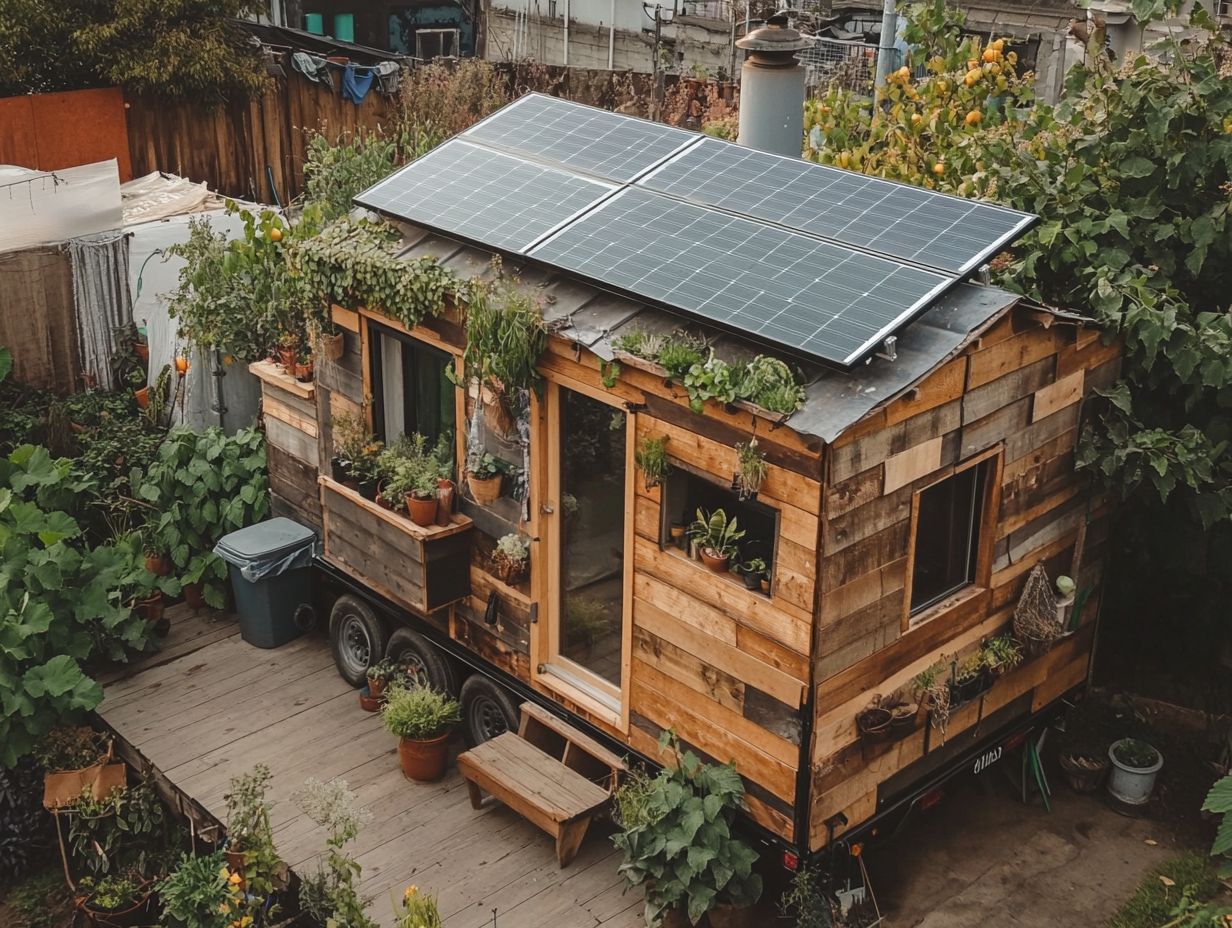
- Recycling is essential for reducing waste and promoting sustainability in tiny homes.
- Commonly used materials like wood, metal, and plastic can be recycled and repurposed in tiny home construction.
- You can easily incorporate recycling into tiny house design through disassembly and reuse techniques, leading to cost savings and environmental benefits.
The Importance of Recycling in Tiny House Construction
The tiny house movement has really taken off in recent years, showcasing the perks of minimalist living alongside the vital role of sustainability in construction through recycled materials.
By embracing eco-friendly practices and drawing inspiration from the DIY tiny house community, you can help create a greener future and achieve exceptional designs.
Consider models like the Boulder from Rocky Mountain Tiny Houses or the enchanting 1967 Airstream trailer that has captured the hearts of many tiny home enthusiasts, including the likes of Macy Miller.
Environmental Impact and Sustainability
The environmental impact of tiny house living is truly remarkable, providing you with a sustainable alternative to traditional housing and championing renewable energy solutions like solar panels, rainwater harvesting, and systems that reuse water from sinks and showers.
Choosing this lifestyle minimizes the physical space you need. It also cuts down on energy consumption and waste production.
Living in these compact environments encourages you to use fewer resources, resulting in a lower carbon footprint.
Consider exemplary projects like the ‘Tiny House on Wheels’ initiative, which effectively integrates these green features, presenting homes with cutting-edge solar technology and innovative insulation methods. Many tiny homes even employ composting toilets and smart landscaping techniques to manage waste sustainably, making tiny living not merely a trend but a genuine pathway toward ecological responsibility. To learn more about this movement, explore the future of sustainable materials in tiny housing.
Materials that Can Be Recycled in Tiny House Construction
When starting the process to build a DIY tiny house, the selection of materials becomes paramount. Consider the benefits of incorporating recycled materials, such as shipping containers, school bus conversions, and reclaimed wood like beetle kill pine.
These choices not only enhance the character of your tiny home project but also champion sustainability in a truly meaningful way.
Commonly Used Materials and Their Recyclability
Shipping containers are a popular choice, easily transformed into stylish living spaces. Airstream trailers, renowned for their distinctive design and high recyclability, also serve as excellent DIY tiny house alternatives.
These materials often come with an impressive eco-friendly profile. Shipping containers, originally intended for transporting goods, are ingeniously repurposed into homes, minimizing waste by utilizing what already exists. Likewise, Airstream trailers, crafted from durable aluminum, not only stand the test of time but can also be recycled at the end of their life cycle. Exploring sustainable material trends in tiny house design further highlights innovative approaches to eco-friendly living.
Beyond these options, reclaimed wood from old barns or factories adds a stunning touch to tiny house interiors, infusing charm and warmth while helping to reduce deforestation. These materials serve not just practical purposes but also promote sustainability, making them perfect for you as an eco-conscious builder. For more insights, explore the environmental impact of sustainable tiny house materials.
How to Incorporate Recycling into Tiny House Design
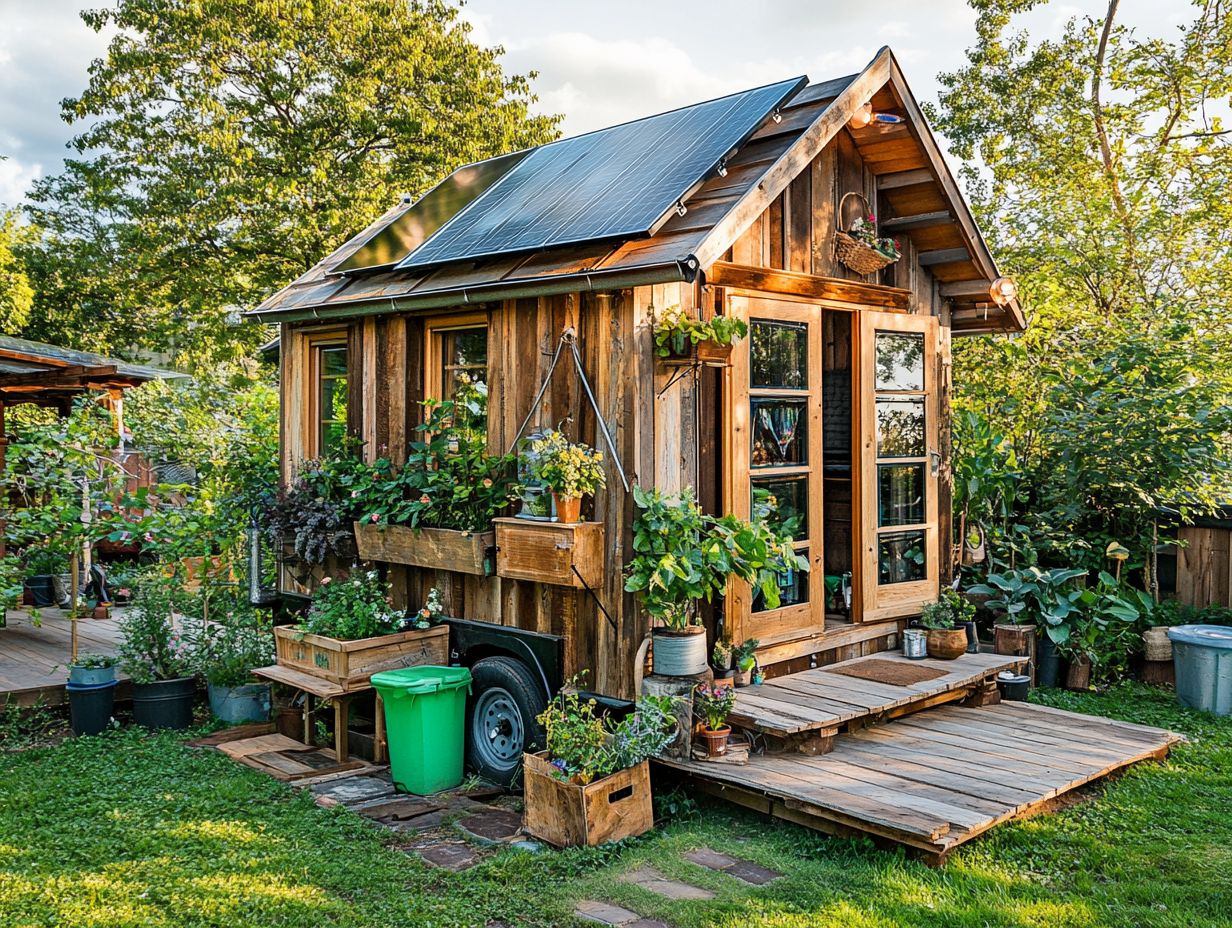
Incorporating recycling into your tiny house design goes beyond just using reclaimed materials. It s about creating structures that make it easy to take apart and reuse.
Innovative designs like the Pocket Shelter and the Lifehaus prototype show how you can achieve sustainable living without sacrificing style or functionality.
Designing for Easy Disassembly and Reuse
Designing your tiny home for easy disassembly is key to sustainable building. It lets you change your space easily as your needs evolve.
This approach minimizes waste while creating adaptable living spaces. By embracing modular designs, you ensure that components can be replaced or upgraded without major renovations.
Many tiny house enthusiasts use prefabricated walls made from steel frames and sustainably sourced wood, making quick assembly and disassembly possible. Choosing reusable materials, like reclaimed wood or repurposed windows, adds unique character to your home while reinforcing your commitment to eco-friendly construction. Additionally, understanding biodegradable materials for tiny houses can further enhance your sustainable living efforts.
Using construction methods that favor connection techniques like bolts instead of nails supports the sustainability goals of the tiny house community.
Recycling Techniques for Tiny House Construction
Using effective recycling techniques in your tiny house can open up innovative ways to repurpose materials. Think about using shipping containers as strong foundations or transforming classic designs like the Airstream trailer into modern living spaces.
This not only boosts sustainability but also adds a unique charm to your home.
Methods for Repurposing Materials
Repurposing materials in tiny house construction offers exciting possibilities. You can turn recycled wood into custom furniture or utilize shipping containers for a sustainable DIY project.
Beyond these popular methods, get creative with discarded items. For example, old pallets can become charming rustic shelves or stylish outdoor seating.
Reclaimed windows and doors serve practical purposes and also enhance the overall character of your tiny house. Adding elements like vintage shutters or upcycled metal roofing minimizes waste and creates a one-of-a-kind living space. Engaging in these innovative DIY projects inspires a greater appreciation for sustainable living while showcasing the incredible potential of overlooked materials, as highlighted in the future of sustainable materials in tiny housing.
Benefits of Using Recycled Materials in Tiny House Construction
Using recycled materials brings exciting benefits! You ll enjoy significant cost savings and make a positive impact on the environment.
These benefits resonate not only within the tiny house movement but also in the broader context of sustainable living, enriching your commitment to eco-friendly practices.
What are your recycling ideas or experiences in tiny house construction? Consider incorporating sustainable building materials for tiny homes! Share with us!
Cost Savings and Environmental Benefits
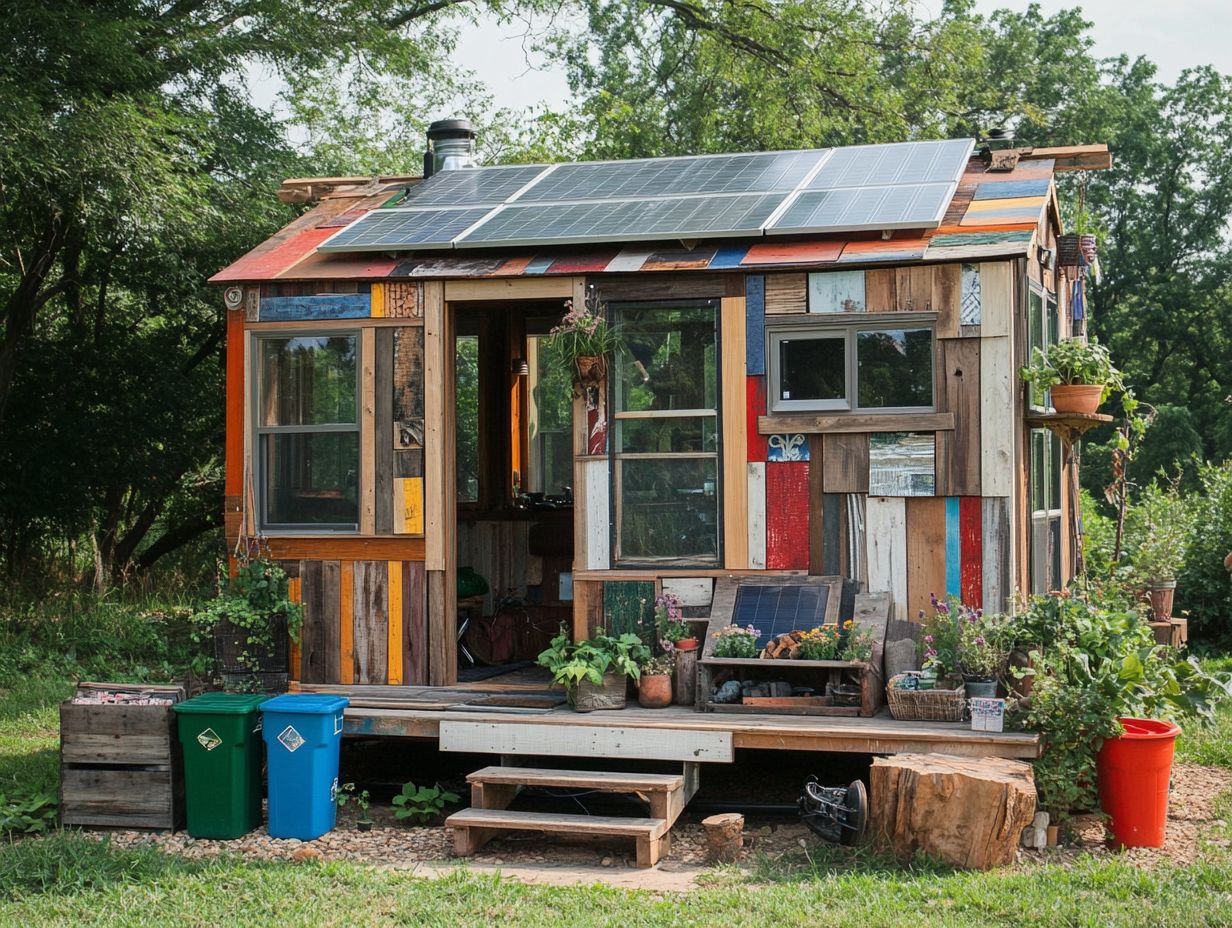
Cost savings and environmental benefits intertwine when you opt for recycled materials in constructing tiny homes. This leads to reduced expenses and a smaller carbon footprint for you as a homeowner.
Take reclaimed wood, for instance. It slashes lumber costs and adds a distinctive aesthetic charm that many builders and buyers find irresistible. A tiny home builder from Oregon shared how sourcing salvaged windows trimmed their construction budget while championing sustainability. For those interested in sustainable options, exploring the best resources for sustainable tiny house materials can be incredibly beneficial.
Incorporating recycled steel and insulation materials enables tiny house creators to minimize waste, resulting in substantial savings. These practices enhance your financial well-being and positively impact the environment by reducing landfill contributions and promoting a circular economy. To learn more about how sustainability plays a vital role in this process, check out the role of sustainability in tiny house construction, which is a system aimed at eliminating waste and encouraging the continual use of resources.
Challenges and Limitations of Using Recycled Materials
While incorporating recycled materials into tiny house construction offers numerous benefits, challenges and limitations require careful navigation, especially regarding building codes and the quality of materials.
Addressing Potential Issues and Limitations
Address potential issues and limitations related to using recycled materials in tiny house construction by engaging in meticulous planning. Consider local building codes and the availability of high-quality materials.
Taking proactive measures is essential to ensure compliance with regulations governing these eco-friendly resources. Collaborate with local suppliers and recycling centers to secure superior materials and support your community.
Implementing educational initiatives can dispel misconceptions surrounding sustainability. Clearly outline the benefits of utilizing recycled components. Emphasize durability and performance to foster greater acceptance among buyers and contractors, ultimately reinforcing the value of sustainable practices in the construction industry.
Frequently Asked Questions
1. What is recycling in tiny house construction and why is it important?
Exploring options like the Boulder model, Rustic Modern Tiny House, and Pocket Shelter exemplifies how recycling can enhance design.
Recycling in tiny house construction involves reusing materials to minimize waste and reduce environmental impact. This helps conserve resources and diminishes landfill waste. For instance, the 1967 Airstream trailer is a perfect example of upcycling vintage materials, aligning with sustainable design practices for tiny houses.
2. What types of materials can be recycled in tiny house construction?
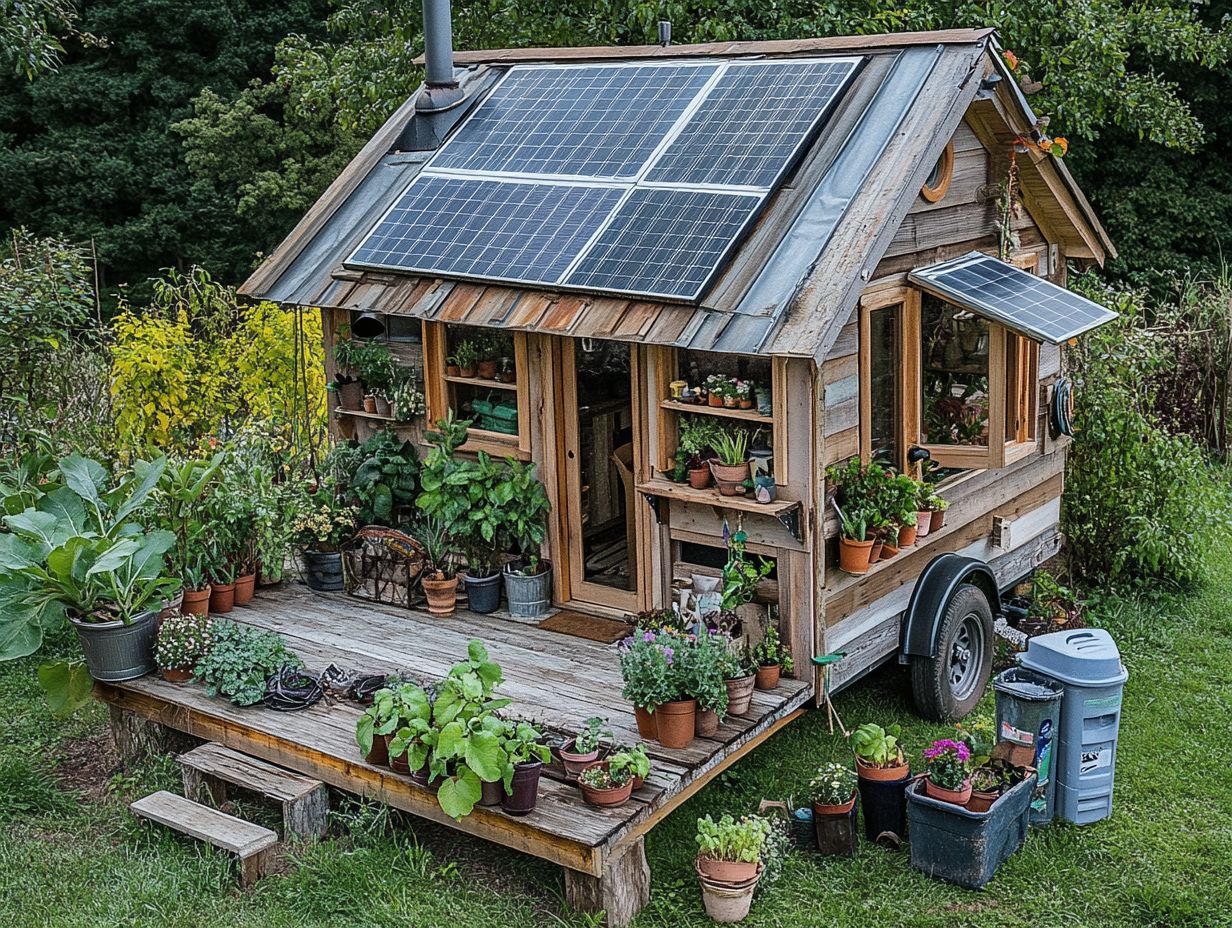
Many materials can be recycled in tiny house construction, including wood, metal, glass, and plastic. These materials can be salvaged from old buildings, repurposed from other projects, or purchased from companies specializing in recycled or reclaimed materials, like Rocky Mountain Tiny Houses.
3. How can I incorporate recycling into my tiny house construction project?
There are several ways to incorporate recycling into your tiny house project. Use recycled materials for the structure, insulation, flooring, and finishing touches. Repurpose materials from old furniture or appliances for functional and decorative elements in your tiny home.
4. Are there any challenges to using recycled materials in tiny house construction?
While there are benefits to using recycled materials, challenges exist. Some materials may be harder to source or require more labor to prepare, particularly with a curved roof tiny house. Carefully plan and research the materials to avoid potential difficulties.
Act now to reduce your waste and costs!
In summary, incorporating recycled materials in tiny house designs not only provides financial benefits but also supports sustainability. By addressing challenges and engaging in careful planning, you can create a beautiful and environmentally friendly home.
5. Is recycling in tiny house construction cost-effective?
Using recycled materials in tiny house construction can save money compared to buying new ones. Local availability and pricing play a significant role in this decision.
Even if the initial cost is higher, recycled materials can lower your energy expenses. They also require less maintenance, which saves money over time.
6. Are there any special considerations to keep in mind for sustainable recycling in tiny house construction?
When using recycled materials in tiny house construction, special care is needed. Clean and prepare all materials to ensure they are safe and strong.
Think about the environmental impact of your choices. Opt for materials that are sourced in an eco-friendly way and free from harmful chemicals.


